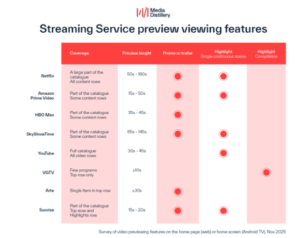Net Insight – Putting media network security at the top of the IP agenda

David Edwards, Product Manager, Net Insight
IP is driving a new era of innovation and efficiency within the media industry, opening up more opportunities for growth and transformation. However, despite the potential of IP’s flexibility to adapt to configuration changes and scalability, there are also inherent challenges that media companies must navigate. As the industry transitions from traditional co-axial video interfaces to open IP-based workflows, network control and network robustness are critical priorities. Media companies need to ensure that their networks and high-value content are protected against both external and internal misconfiguration and stream routing issues.
 Media companies can’t afford to compromise the integrity of their media networks, especially as that could lead to financial and reputational damage in the millions. New industry standards like SMPTE RP2129, developed by the Society of Motion Picture and Television Engineers (SMPTE), provide recommendations for ensuring robust media transport over IP networks and guidelines for stream protection, adaptation of streams over network boundaries, and network monitoring. SMPTE’s recommended practice emphasizes why media companies need to prepare today to level up their network control and configuration procedures – to ensure they harness the full flexibility of IP while removing risks that full IP flexibility presents.
Media companies can’t afford to compromise the integrity of their media networks, especially as that could lead to financial and reputational damage in the millions. New industry standards like SMPTE RP2129, developed by the Society of Motion Picture and Television Engineers (SMPTE), provide recommendations for ensuring robust media transport over IP networks and guidelines for stream protection, adaptation of streams over network boundaries, and network monitoring. SMPTE’s recommended practice emphasizes why media companies need to prepare today to level up their network control and configuration procedures – to ensure they harness the full flexibility of IP while removing risks that full IP flexibility presents.
Moving beyond closed media interfaces
Historically, media companies relied on closed interfaces like Serial Digital Interface (SDI) to transport uncompressed video feeds. The co-axial connectivity of SDI also provided minimal risk of cross-connecting to incompatible data-streams. SDI’s limitations have become apparent with the transition to all-IP workflows interfacing, such as ST 2110 and attempting to extend SDI’s handling of UHD-4K formats. The desire to deliver greater operational efficiencies and network flexibility has driven a shift away from SDI connectivity to address the dynamics of today’s media landscape. However, transitioning to an IP-native media network presents new challenges that can slow deployment responsiveness and introduce new operational risks.

The transmission of video, audio, and data over IP means content is crossing various domains, network links, and ports. In the IP-native world, the capability to connect any devices, anywhere in the world – whether they are compatible or not, introduces concerns about network stability and operational practices. However, adding new services may trigger risks. For example, mistakenly over-rating the network or introducing a new service with excessive jitter that could disrupt the core network and multiple services. These issues can lead to severe disruptions in content delivery.
It’s easy to imagine the repercussions of such configuration errors when it comes to the live broadcasting of high-value content. Media organizations investing millions in securing rights and setting up industry-leading live productions can’t afford to compromise the stability of their premium content and damage their revenues and reputation. It’s more important than ever to take control of the IP media traffic and the type of streams that go through these networks to safeguard against potential network or stream failures.
The path to media network security
While control and robustness are mission-critical capabilities for IP-based media networks, these media-specific issues are not well served by IT-centric technology. Solutions such as IT firewalls, which predominantly guard against security threats, do not adequately address the problems and protections that media networks encounter.
To overcome these challenges, media organizations can benefit from tailored solutions such as SMPTE RP2192, which can effectively segment and protect misconfigured connections or streams permeating across IP media networks and do so without introducing complexity or manual processes. Innovative solutions that enable IP media to pass through a Real-Time Transport Protocol (RTP) media proxy offer a compelling alternative. This technology empowers system architects and network operations teams to implement rules-based and automated functionality, creating air-gaps between media networks tailored to individual needs that keep each and every media flow separated. The creation of actively managed sub-networks within organizations allows for dynamic and responsive operations across national and international domains. Therefore, it enhances the robustness and reliability of connecting across untrusted media network boundaries preventing outages and preserving the integrity of established media flows.
These solutions terminate media flows at the network boundary and re-establish them with valid properties on the destination network without disrupting other active IP media flows. By doing so, they enhance the resiliency of the overall media network by preventing new streams or configurations from disrupting other stream connectivity. This innovative blueprint provides a robust, orchestratable framework that ensures the protection of high-value content within a media network and across boundaries to partner networks. In addition, it enables comprehensive monitoring and assurance of IP media payloads with ETR 101/290 P1 performance metrics. Media companies can have peace of mind that they can harness unparalleled visibility and control over their media traffic without risking the quality and stability of the video signals transported.
Equally, new media network security solutions drive significant business efficiencies. With automated protection to minimize service outages, safely enabling the IP promise of greater network agility and operational efficiency, network operators can launch new services more rapidly and become more cost-efficient in their operations.
Revolutionizing media network security in the IP era
IP connectivity is driving unprecedented innovation, monetization, and operational efficiencies. Media companies that have the right technological foundations that enable security, flexibility, and resiliency while meeting the stringent demands of seamless, high-quality IP video transmission will have an advantage to enable them to thrive.
As media companies continue to navigate the complexities of the IP landscape, now is the right time to embrace network security solutions that prioritize control and flexibility. Innovation in media network security enables organizations to confidently manage and segment media networks, reducing risks and fostering a more secure operational environment that creates the opportunity to increase operational efficiency.









